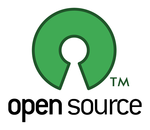Enabling IPv6 and PNRP in Windows Vista
Windows Vista is the first version of Windows to support IPv6 out of the box. Even those of us with an IPv4 connection can make use of this, using a technology called Teredo to get IPv6 connectivity over IPv4. With Google finally getting IPv6, now seems like a good time for others to start too.
The steps to enable IPv6 are simple:
- Open up a command prompt with administrator privileges. Start->All Programs->Accessories, right click on Command Prompt and select Run as administrator.
- If you aren’t on a router, or if your router supports UPNP, enter
netsh interface teredo set state client. - If you want to manually forward a port or your router doesn’t support UPNP, enter
netsh interface teredo set state client clientport=12345, substituting 12345 with the port you want to use. You will have to forward UDP over this port to your computer. - Now wait for a minute or so and run
netsh interface teredo show state. It should show “qualified” under State. - Now if you run ipconfig, it should come up with a Tunnel adapter Local Area Connection with an IPv6 address starting with 2001:0.
- You can test if it’s working by visiting Google IPv6, or the KAME project’s famous dancing kame.
Now for the second part of the post. PNRP (Peer Name Resolution Protocol) version 4.0 was also introduced in Windows Vista. With PNRP, every computer can have a hostname pointing to it that allows any XP SP2, Vista, and Server 2008 computer to connect to it via the internet. This can be incredibly useful if you’re on the go and wish to remote in to your computer. Another use I’ve found for it is to enable it on relative’s PCs for those inevitable tech support calls that we geeks despise so much.
PNRP functions solely over IPv6, so you will need to have a valid IPv6 address to make it work. The above Teredo instructions should work fine if you don’t. Here’s how you enable it:
- Open up a command prompt with administrator privileges.
- Run the command
netsh p2p pnrp peer set machinename publish=start autopublish=enable. - Now if you run
netsh p2p pnrp peer show machinename, it should show you a hostname to use in the format p.<random hex here>.pnrp.net. Record this name, and you can use it to talk to your machine remotely just like any other hostname.
Developers aren’t left out either: Windows comes with an extensive P2P framework, and PNRP is only one of the things built on it. WCF for instance has full integration with P2P.
Related Posts
- My Windows Vista/7/8 Wishlist on February 24, 2009 in Microsoft, Windows Vista
- MSDN Content Service on December 02, 2007 in Microsoft
- Visual Studio 2008 released, TR1 support coming on November 24, 2007 in Microsoft
- I/O Improvements in Windows Vista on May 30, 2009 in Microsoft, Windows Vista
- Come meet up at The Underground on November 17, 2009 in Microsoft
